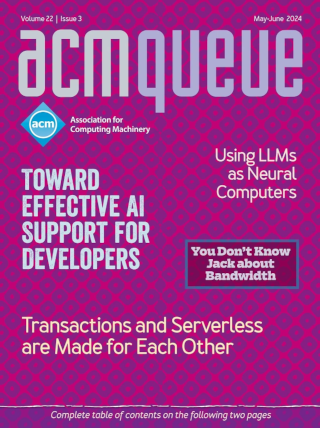
Enhanced Debugging with Traces:
An essential technique used in emulator development is a useful addition to any programmer’s toolbox.
Creating an emulator to run old programs is a difficult task. You need a thorough understanding of the target hardware and the correct functioning of the original programs that the emulator is to execute. In addition to being functionally correct, the emulator must hit a performance target of running the programs at their original realtime speed. Reaching these goals inevitably requires a considerable amount of debugging. The bugs are often subtle errors in the emulator itself but could also be a misunderstanding of the target hardware or an actual known bug in the original program. (It is also possible the binary data for the original program has become subtly corrupted or is not the version expected.) Solving these problems requires some unusual debugging techniques.
Broken Builds:
Frequent broken builds could be symptomatic of deeper problems within a development project.
Is there anything more aggravating to programmers than fellow team members checking in code that breaks a build? I find myself constantly tracking down minor mistakes in other people’s code simply because they didn’t check that their changes didn’t break the build. The worst part is when someone has broken the build and they get indignant about my pointing it out. Are there any better ways to protect against these types of problems?
Cooling the Data Center:
What can be done to make cooling systems in data centers more energy efficient?
Power generation accounts for about 40 to 45 percent of the primary energy supply in the US and the UK, and a good fraction is used to heat, cool, and ventilate buildings. A new and growing challenge in this sector concerns computer data centers and other equipment used to cool computer data systems. On the order of 6 billion kilowatt hours of power was used in data centers in 2006 in the US, representing about 1.5 percent of the country’s electricity consumption. Of this power demand, much more than 20 percent is typically used for cooling the computer equipment, but some newer installations have managed to reduce consumption through a series of innovations in the design of data-center cooling systems, as well as improvements in the software and hardware.
A Conversation with Jeff Heer, Martin Wattenberg, and Fernanda Viégas:
Sharing visualization with the world
Visualization can be a pretty mundane activity: collect some data, fire up a tool, and then present it in a graph, ideally with some pretty colors. But all that is changing. The explosion of publicly available data sets on the Web, coupled with a new generation of collaborative visualization tools, is making it easier than ever to create compelling visualizations and share them with the world.





